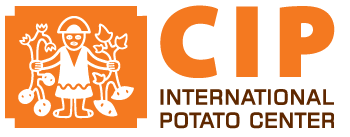
While the Russia-Ukraine war has had repercussions across the globe, it has been especially problematic for bakeries and households in Africa, a region that imports more than 40 percent of its wheat from Russia and Ukraine. While African countries are extremely dependent on imported wheat, and vulnerable to the vagaries of the international market, a growing number of bakers are taking advantage of a home-grown alternative – orange-fleshed sweetpotato puree, which can be substituted for about half the flour in bread or other baked goods.
Root and tuber crops like sweet potato have long been important staples in sub-Saharan Africa, especially among the rural poor, and because they are grown and consumed locally, they can buffer consumers from global commodity price shocks. The production and use of sweetpotato puree, however, is a recent development – part of the CGIAR International Potato Center’s (CIP) promotion of that resilient crop to fight hunger and malnutrition.
While most Africans grow and eat white- or yellow-fleshed varieties, orange sweetpotato is an excellent source of vitamin A – an essential nutrient for the health and development of pregnant women and children. One small orange sweetpotato can supply the daily vitamin-A needs of a young child, reducing their risk of infections, disease, and blindness. The robust root crop grows well on marginal land, with few or no chemical inputs, and produces more calories per hectare than wheat or rice, with less water.
CIP has partnered with national agricultural systems to breed resilient, high-yielding orange sweetpotato varieties adapted to local conditions and facilitate the development of seed systems to get quality planting material for them to almost 7 million farm households over the past decade. The promotion of orange sweetpotato puree production and use in baked goods is part of a broader effort to create demand for orange-fleshed varieties, to motivate more farmers to grow them and increase consumption of the nutritious crop.

Scientists found that puree retains its pro-vitamin-A content when baked, so the bread is almost as nutritious as boiled sweetpotato. CIP has helped businesses adopt aseptic puree production methods and its researchers developed a procedure to vacuum pack puree, giving it a three-month shelf life without refrigeration. This was vital to facilitate greater consumption, given sweetpotato’s perishability and the scarcity of refrigeration in rural Africa. At the same time, extension agents train smallholders – who produce 80 percent the food in Africa – in appropriate agricultural practices and postharvest handling of sweetpotato, so they can deliver the quality product that processors demand.
Most consumers like sweetpotato bread, and once people understand its nutritional value, they are willing to pay a little more for the “golden bread.” The pure can also be used in baby food, doughnuts, and other snacks. Bakers like it because they not only reduce their flour bill but also the amount of sugar and oil they use in dough, by 70% and 30% respectively. A growing number of businesses in Africa are producing or using sweetpotato puree as an ingredient, and CIP is collaborating with companies in Kenya, Malawi, and Uganda with a goal of increasing puree production to 10,000 tons per year.
Urbanization is advancing rapidly in Africa, where half the population is expected to live in urban areas by 2035, which will create urban food markets worth an estimated USD 500 billion. This includes growing demand for bread and processed foods, which creates opportunities for investors, workers, and farmers. For rural families that form part of the orange-fleshed sweet potato value chain, this can mean more nutritious diets, from the pro-vitamin-A crop they grow to the other varied foods their income enables them to buy.
Blog by David Dudenhoefer
